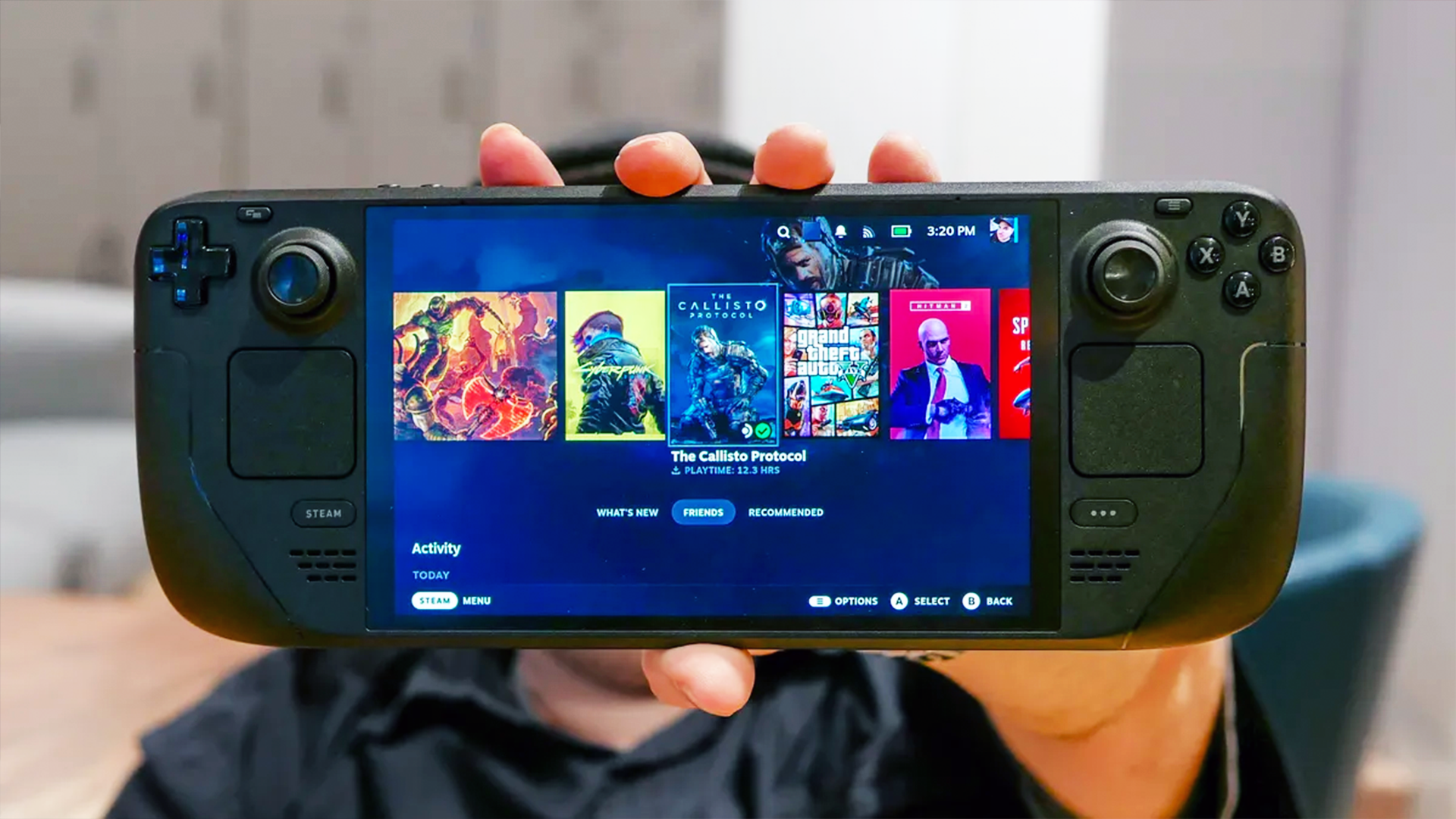Galaxy S10 vs. OnePlus 6T: The Flagship Killer Takes on the Android King
The Galaxy S10 may aspire to be the head of the Android phone class, but it features some unexpected competition from the OnePlus 6T. Here’s how these phones compare.
Samsung's lineup of Galaxy S10 phones delivers a powerful new processor, improved cameras and — in the case of the S10 and S10 Plus — an in-display fingerprint sensor to what has been the leading flagship Android phone of recent years. Despite all these improvements, though, Samsung's new phone still has more than its share of challengers, including one that's elbowed its way past other more-established phone makers.

Are the extra savings worth it with the OnePlus 6T? Or are you better off going with Samsung's latest and greatest phones? To find out, we compared the Galaxy S10 to the OnePlus 6T to see which Android phone comes out on top.
Galaxy S10 vs. OnePlus 6T: Specs Compared
| Row 0 - Cell 0 | Galaxy S10e | Galaxy S10 | Galaxy S10 Plus | OnePlus 6T |
| Starting Price | $749 | $899 | $999 | $549 |
| Screen Size (Resolution) | 5.8 inches (2160 x 1080) | 6.1 inches (3040 x 1440) | 6.4 inches (3040 x 1440) | 6.4 inches (2340 x 1080) |
| CPU | Snapdragon 855 | Snapdragon 855 | Snapdragon 855 | Snapdragon 845 |
| RAM | 6GB, 8GB | 8GB | 8GB, 12GB | 6GB, 8GB |
| Storage | 128GB, 256GB | 128GB, 512GB | 128GB, 512GB, 1TB | 128GB, 256GB |
| microSD? | Yes (up to 512GB) | Yes (up to 512GB) | Yes (up to 512GB) | No |
| Rear Camera | 16-MP ultra-wide (f/2.2), 12-MP dual-pixel wide (f/1.5, f/2.4) | 16-MP ultra-wide (f/2.2), 12-MP dual-pixel wide (f/1.5, f/2.4), 12-MP telephoto (f/2.4) | 16-MP ultra-wide (f/2.2), 12-MP dual-pixel wide (f/1.5, f/2.4), 12-MP telephoto (f/2.4) | 16-MP (f/1.7), 20-MP (f/1.7) |
| Front Camera | 10-MP (f/1.9) | 10-MP (f/1.9) | 10-MP (f/1.9), 8-MP (f/2.2) | 16-MP (f/2.0) |
| Battery | 3,100 mAh | 3,400 mAh | 4,100 mAh | 3,700 mAh |
| Battery Life (Hrs:Mins) | 9:41 | 10:19 | 12:35 | 10:23 |
| Fingerprint Sensor | On power button | In-display ultrasonic | In-display ultrasonic | In-display optical |
| Size | 5.6 x 2.75 0.3 inches | 5.9 x 2.77 x 0.3 inches | 6.2 x 2.91 x 0.3 inches | 6.2 x 2.94 x 0.3 inches |
| Weight | 5.3 ounces | 5.5 ounces | 6.17 ounces | 6.52 ounces |
| Colors | Flamingo Pink, Prism Black, Prism White, Prism Blue, Prism Green, Canary Yellow | Flamingo Pink, Prism Black, Prism White, Prism Blue, Prism Green | Flamingo Pink, Prism Black, Prism White, Prism Blue, Prism Green, Ceramic White, Ceramic Black | Mirror Black, Midnight Black |
Design
There's no doubt that Samsung has set a new standard for "all-screen" smartphone design with the latest Galaxy S10. OnePlus took the iPhone-inspired screen notch and shrank it down to a slick teardrop shape (good enough for an 86.6-percent screen-to-body ratio). But the Galaxy S10 uses Samsung's Infinity O display, highlighted by small in-screen cutouts for its selfie cams to allow for a true edge-to-edge display. The result is a 93.1-percent screen-to-body ratio for the S10.

You have three sizes to choose from with the Galaxy S10 — the 5.8-inch S10e, the 6.1-inch S10 and the 6.4-inch S10 Plus. The latter model matches the screen size of the OnePlus 6T, though Samsung's supersized phone isn't as wide. It measures 6.2 x 2.91 x 0.3 inches, compared with the 6T's 6.2 x 2.94 x 0.3 inches. The 6T is marginally heavier as well — 6.25 ounces versus 6.17 ounces for the S10 Plus.

Both Samsung and OnePlus build fingerprint sensor into their screens, but there's more than one way of pulling off that trick. The OnePlus 6T uses a 2D optical sensor that performed well in our testing, especially when compared with other phones with optical sensors.

Samsung's S10 lineup uses an ultrasonic sensor, though, that creates a 3D map of your finger so that it's more secure. We also had good luck using the S10's in-screen sensor when our fingers were wet. However, the S10's in-screen sensor can be finicky at times. (Note that the less expensive Galaxy S10e does not have an in-display sensor, but instead puts its fingerprint reader inside the phone's power button.)
Get instant access to breaking news, the hottest reviews, great deals and helpful tips.

You're likely to get more of a kick out of the glossy and brilliant rear finish of the S10 phones, while the 6T offers a muted matte texture. In the color options department, Samsung wins big, with a total of six choices between the S10 and S10 Plus: Flamingo Pink, Prism Black, Prism White, Prism Blue, Ceramic White, Ceramic Black. (The latter two options are only available on the S10 Plus.) OnePlus keeps it simple with just MIdnight Black and Mirror Black versions.

For waterproofing, the Galaxy S10 phones' solid IP68 rating beats out OnePlus' light, non-IP-rated resistance.
The 6T is OnePlus' first phone to ditch the headphone, which makes for a more seamless body casing. But if you're a fan of the vintage 3.5mm port, the one on Samsung's S10 handsets will give you what you need at little cost to design.
Winner: Galaxy S10
Display
The Dynamic AMOLED panels on Samsung's new Galaxy phones are the best-looking displays we've seen, while the OnePlus 6T's AMOLED screen comes across as less bright and less rich.

Measuring the displays with a light meter, all three S10 models hit more than 600 nits. The OnePlus 6T topped out at 405 nits. The gap isn't that surprising since we noticed the 6T's screen is noticeably dimmer than a lot of other OLED panels when we reviewed that phone last year.
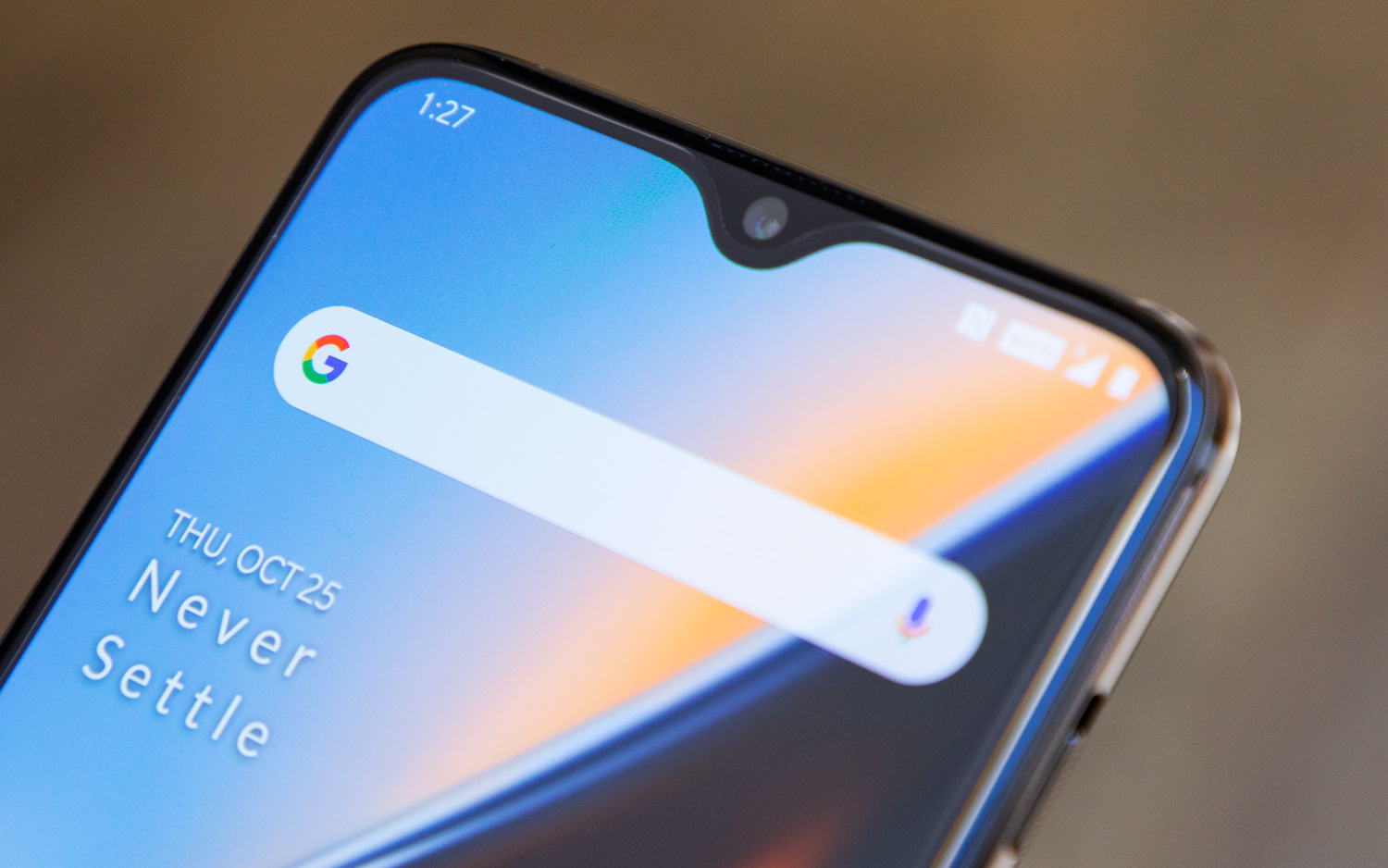
It's a closer match regarding color reproduction, where the OnePlus 6T covers 222.6 percent of the sRGB color gamut, with those colors proving pretty true to life based on the 6T's Delta-E score of 0.36. (A score of 0 is perfect.) That's about equal to the 0.35 Delta-E rating for the Galaxy S10 Plus, which covered only 170.2 percent of sRGB spectrum. (By default, the S10 uses a Natural color setting for its display, though you can amp that up to Vivid if you like.)
MORE: Best Android Phones Available Right Now
At 2340 x 1080, the OnePlus 6T delivers a good resolution, but things are just sharper on the Galaxy S10. Both the S10 and S10 Plus feature a 3040 x 1440 that just looks better to the eye.
Winner: Galaxy S10
Camera
If there's one area where you'll make trade-offs for the lower price of a OnePlus phone, it's with the device's camera. The cameras on OnePlus' phones are fully featured and take decent shots, but they don't measure up to what you get from the leading flagships.
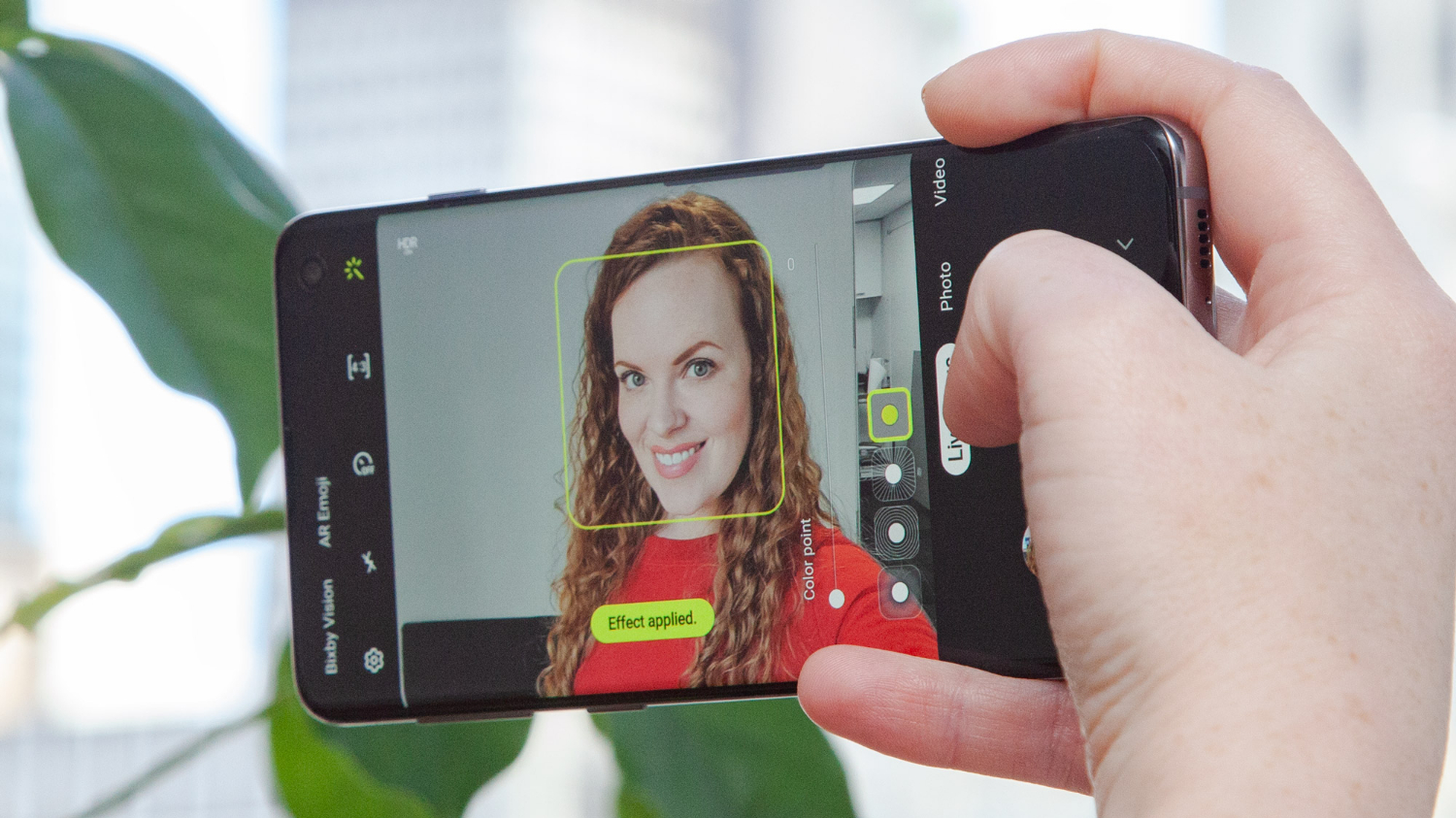
That trend continues here. The OnePlus 6T features a dual-lens setup on the back — a 16-megapixel main lens augmented by a 20-MP secondary shooter — along with software enhancements designed to help with portrait shots and low-light settings. But the Galaxy S10 ups the ante, with both the S10 and S10 Plus offering three lenses: a 16-MP ultra-wide-angle lens, a 12-MP dual-pixel wide-angle shooter and a 12-MP telephoto lens. Samsung turns to software, too, with Live Focus effects that let you trick out your images, and AI-powered scene recognition to optimize camera settings.
The OnePlus 6T holds its own in some circumstances. This shot of challah bread captures the glistening shine on the bread's crust and re-creates the warm colors very nicely. But the S10's shot is just a touch better, with sharper details around the bread's curves. The ultra-wide-angle lens on the phone also lets you see more of the nearby loaves.
In the Grand Central Station, with its challenging lighting, the OnePlus 6T does OK at preventing the lighting from the back windows to wash out the scene. You can even see the designs on the ceiling and around the windows, though the S10's camera makes the brickwork on the pillars stand out a little more. Where the 6T falls down is with the passengers in the foreground — some look very blurry, while the Galaxy S10 manages to keep everyone in focus.
The S10 begins to pull away when the lights are low. You can make out the blue and yellow leaves in the OnePlus 6T's photo, but objects in the foreground aren't in focus. The entire scene also has a yellowish cast over it. The S10's rendition isn't perfect — the details on the globe are lost in shadow and the whole scene looks muted. But the details pop out more clearly and the entire scene is in focus.
Again, the S10 doesn't nail everything — some of Caitlin's hair gets caught up in the background blur — but the S10's cameras aren't overwhelmed by the background lighting in the way that the 6T is.
Winner: Galaxy S10
Performance
OnePlus' penchant for packing its phones full of RAM closes the performance gap somewhat with the S10 and its newer Snapdragon 855 chipset. But there's still a gap, and the new mobile processor from Qualcomm is the reason why. Qualcomm says the 855 benefits from the biggest jump in performance from every Snapdragon upgrade, and that's what we saw when we benchmarked all of the Galaxy S10 models.

The Galaxy S10 Plus recorded a multi-core score of 10,732, and the other two S10 models weren't far off that pace. (The S10e's Geekbench score was 10,513, despite having only 6GB of RAM, compared with 8GB in the S10 Plus.) The OnePlus 6T, running last year's Snapdragon 845, scored 8,972, even with 8GB of RAM in our review unit. So the S10 improved upon the 6T's performance by 17 to 20 percent, depending on what model you want to compare it with.

The gap in graphics testing wasn't as vast, but the Galaxy S10 still enjoyed an edge. Running 3DMark's Slingshot Extreme test, the results from the S10 (5,606) and the S10 Plus (5,648) both topped the OnePlus 6T's 5,183. And the 6T was among the better-performing Snapdragon 845-powered phones we tested in 2018.
MORE: Best Smartphones - Here Are the 10 Best Phones Available
Real-world tests also show off the Galaxy S10's superiority. We used Adobe Clips to transcode a 4K clip to 1080p, and the Galaxy S10 Plus took 2 minutes and 26 seconds to complete the task, even though Clips isn't optimized for that phone. (The forthcoming Adobe Premiere Rush is designed to work with Samsung's new phones.) That still beat the OnePlus 6T's time of 3:45.
It will likely be a different story once OnePlus comes out with its own Snapdragon 855-powered phone — most likely the OnePlus 7 — later this year. But the S10 uses its newer chipset to race ahead over last year's top-performing flagship.
Winner: Galaxy S10
Special Features and Security
Samsung likes to add software features to try to keep up with Apple's iPhones, while OnePlus talks up the simplicity of the OS on its phones.
Since Samsung's AR Emojis to (a remixed take on Apple's Animojis and Memojis) and its Bixby virtual assistant (made to compete with Siri) haven't been well received, having them on the new S10 phones is hardly an advantage.
But, for Android 9.0 Pie — loaded on the S10 phones — Samsung has debuted its all-new OneUI interface to match OnePlus' tasteful OxygenOS take on the Google OS. Both phone brands now offer experiences closer to what you would find on the Google Pixel, but OnePlus has a better track record of offering Android updates sooner.
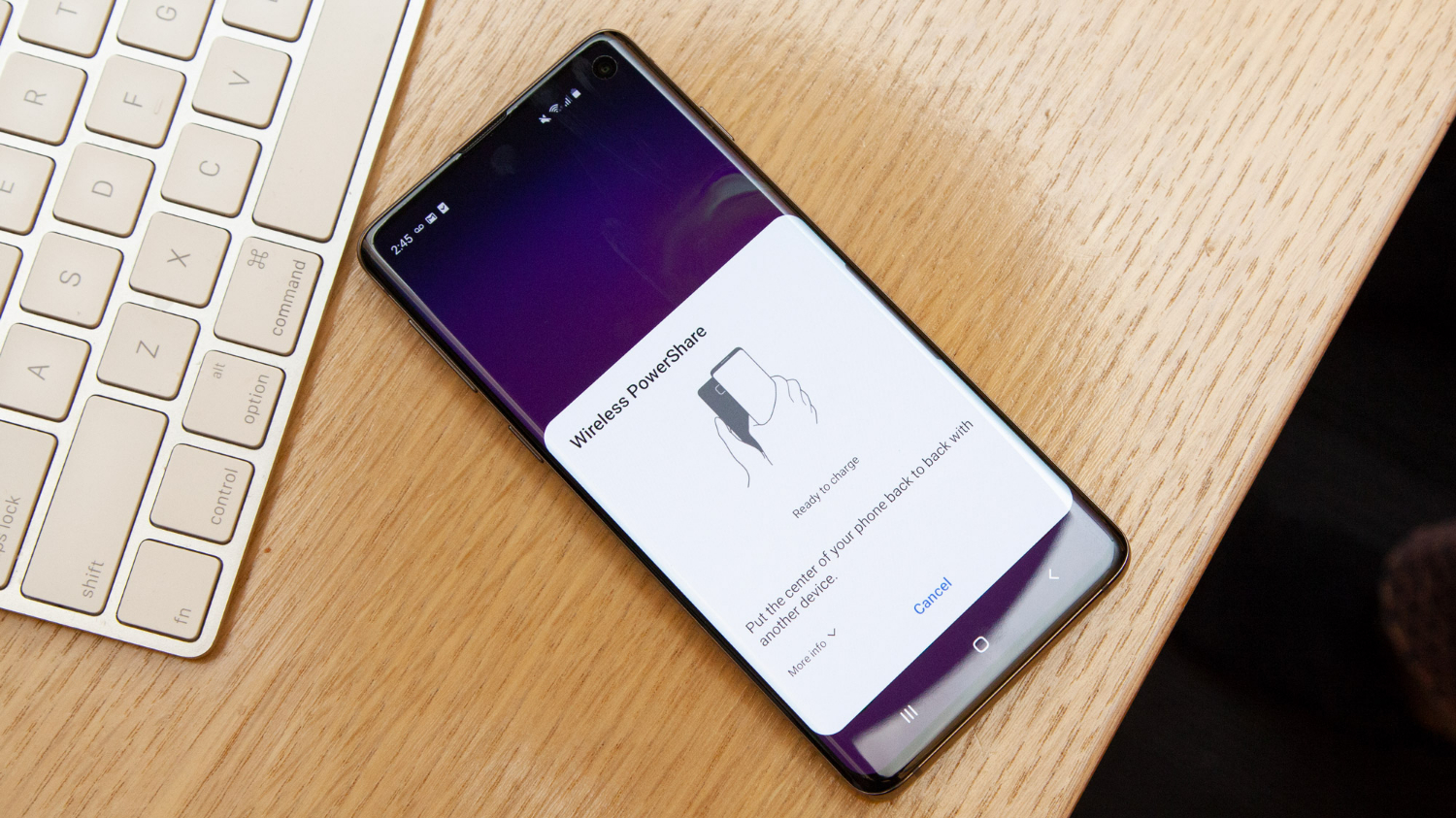
The S10 family enjoys an edge over the OnePlus 6T — all three models support wireless charging, while OnePlus' phone does not. Even better, a Wireless PowerShare feature for the new S10 phones lets you turn them into a wireless charging pad that can top off the batteries of other devices that use the Qi standard.
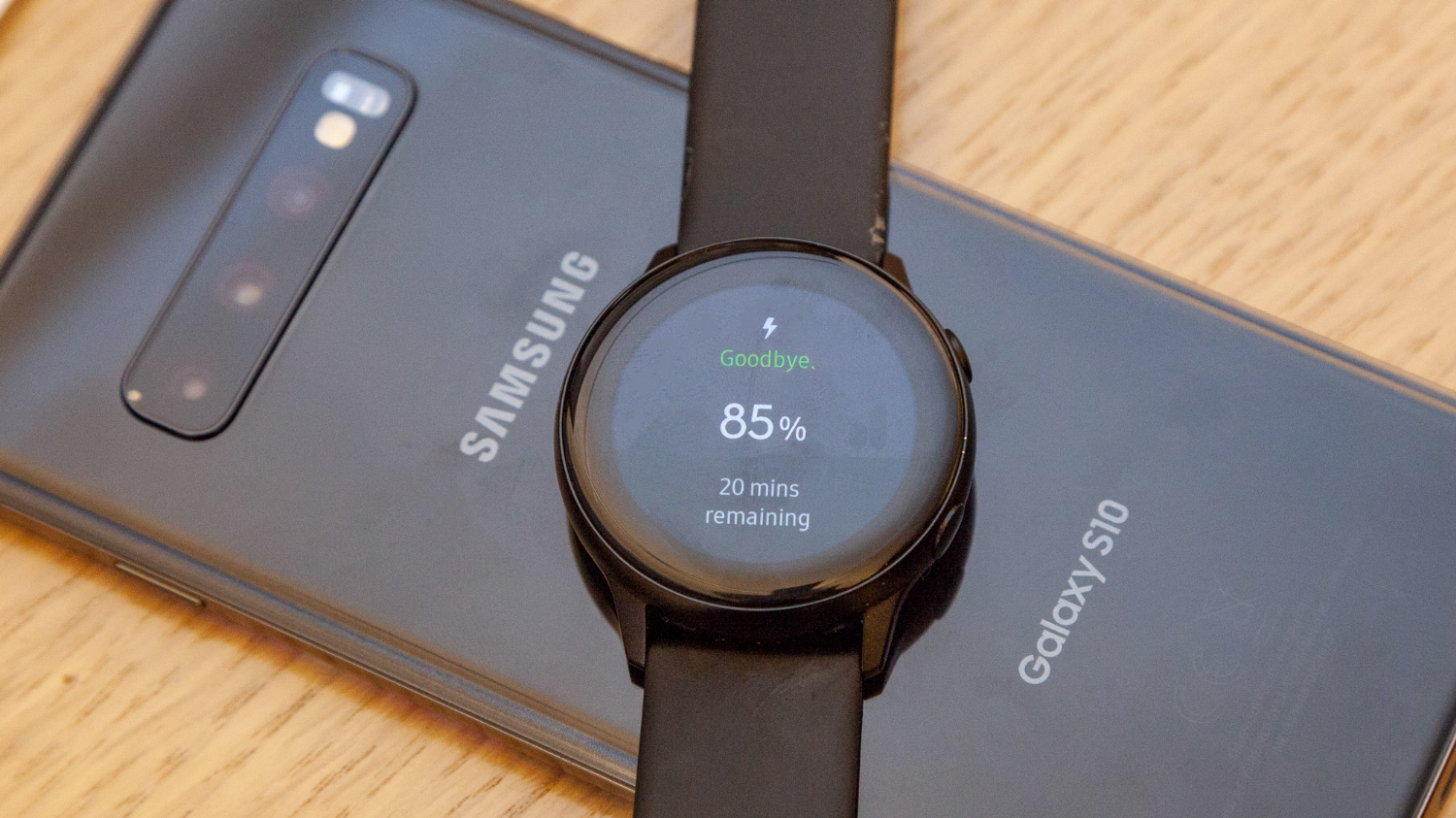
One other feature the S10 phones have over the OnePlus that some pro user will find useful is support for Samsung's DeX, which essentially transforms the phones into desktop computers that can hook up to a keyboard, mouse and monitor. Of course, this kind of smartphone-ing hasn't really caught on in the mainstream yet, and grabbing the phone just for this niche option seems unlikely.
We've already talked about the different fingerprint sensors on the S10 and 6T, where Samsung's approach is definitely more secure. But the phones each offer facial recognition as well, where you use front-facing cameras to scan your face. Don't expect Face ID-level security from either the S10 or the 6T — you can't confirm mobile payments with your face the way you can on an iPhone. And both phones can be fooled into thinking a photograph is a face.
Winner: Galaxy S10
Battery Life and Charging
The OnePlus 6T's 3,700 mAh battery is bigger than the power pack inside the Galaxy S10 (3,400 mAh) and the Galaxy S10e (3,100 mAh). But the 4,100 mAh battery inside the Galaxy S10 Plus trumps them all, and that Samsung phone has the battery life to prove it.

When we ran the Tom's Guide battery test on the S10 Plus — continuous web surfing over T-Mobile’s LTE network until the fully charged phone ran out of power — Samsung's largest model held out for 12 hours and 35 minutes. That's more than 2 better than the 6T's 10:23 result, though the OnePlus phone did edge out the S10 (10:19). The S10e fared the worst on our battery test, finishing at 9:41.
MORE: Smartphones With the Longest Battery Life
You may need a cable to charge your OnePlus 6T, but at least the phone powers up quickly, thanks to the phone maker's Dash Charge feature. You can get the 6T's battery to 60 percent after 30 minutes of charging. The Galaxy S10's Quick Charge 2.0 feature isn't as fast.
Winner: Galaxy S10
Value
One thing OnePlus definitely gets right in its face-off with the new Galaxy models (and most any flagship phone you buy today) is price.
As noted, the 6T starts at $549, a full $200 cheaper than the entry-level Galaxy S10e. But even upgrading your 6T won't break the bank. A model with 8GB of memory and 256GB costs $629; the comparable Galaxy S10e model costs $220 more. You'd have to spend $899 or $999 to get an S10 or S10 Plus, and if you upgrade either the RAM or the storage, you're looking at an even bigger price difference. (Both the S10 and S10 Plus offer more extensive memory and storage options, though.)
It’s easier to get a Galaxy S10 from the carrier you want. All four major carriers sell the S10, and Samsung's phone is also available through Xfinity Mobile and US Cellular. The OnePlus 6T is the first OnePlus device to be sold through a carrier — T-Mobile offers the $579 8GB/128GB model. You can also buy the phone unlocked if you want to use it with either AT&T or Verizon.
Winner: OnePlus 6T
Bottom Line
| Row 0 - Cell 0 | Galaxy S10 | OnePlus 6T |
| Design (10) | 9 | 7 |
| Display (15) | 14 | 11 |
| Cameras (20) | 18 | 15 |
| Performance (15) | 14 | 12 |
| Special Features and Security (10) | 8 | 7 |
| Battery Life (20) | 16 | 15 |
| Value (10) | 7 | 9 |
| Overall Score (100) | 86 | 76 |
Daniel Bean is a freelance writer with years of experience whose articles have appeared in Tom's Guide. He has previously worked for LinkedIn, Yahoo News, and the Observer, as well as TripleByte, Circa, Inverse, CBS, and ABC. Currently, he is full-time content lead for Mixpanel's blog, The Signal, writing about innovators and analytics.
